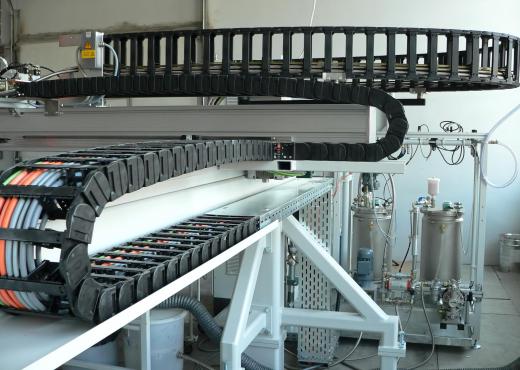Conveyors are designed to move materials or people from one location to another. They may be built from belts, chains or even stairs in the case of escalators. All require a power source, which is provided by conveyor drives. Electricity, gas or diesel motors, or water may be used to power these drives, but they all work in the same way.
A common conveyor is a continuous flexible belt passing over a series of rollers and looping over drive or idler rollers at each end. The drive roller is connected to the motor drive, the idler moves with the belt at the opposite end. An idler roller typically has no conveyor drives attached to it, although very long units may be powered at both ends.

Chains may also be used to move parts or machines. Each drive motor contains gear systems and a toothed or sprocket wheel that interlocks with the chain. The chain is driven at the speed set by the gears and can move wheeled objects such as automobiles or carts. Automatic car washes and automotive assembly plants are common users of chain conveyor drives.

Heavy materials such as dirt, thick slurries and minerals can be moved with screw conveyors. A metal screw is wrapped around a central drive shaft and welded to it, where it rotates and can move materials along its length. They are useful for moving materials vertically, especially products that would slide down a belt.
People can be moved on conveyors in areas of high pedestrian volume. Belts set at a walking speed were installed in buildings, airports and outside in warmer climates beginning in the 1950s, with simpler designs as early as the 1890s. The moving sidewalk or walkway allowed people to walk on and either continue walking or stand until the belt ended. Escalators are also conveyors, with a continuous loop of steps instead of a belt.
Many industrial conveyor drives are single speed devices, with a fixed speed set by the motor and gears. Improvements in motor design in the late 20th century have resulted in variable speed drive motors. These drives have advantages over constant speed devices for manufacturing operations where parts maintain a constant speed or distance.
An example of variable speed is a bottle-filling machine designed to fill a certain volume of liquid in a given time. If smaller bottles are used, the conveyor must run at a higher speed to supply the necessary number of bottles. When larger bottles are used, the speed can be reduced to provide the proper filling rate. These changes can be made efficiently with variable-speed drive motors.
Designers can also change the speed of moving products by slightly varying the speed of groups of belts. For a belt system, shorter lengths can be constructed in series, with each section having a slightly different speed than the ones next to it. This method can increase or decrease speeds using lower-cost single speed conveyor drives. Each section has its own drive motor running at the speed required for that section.
